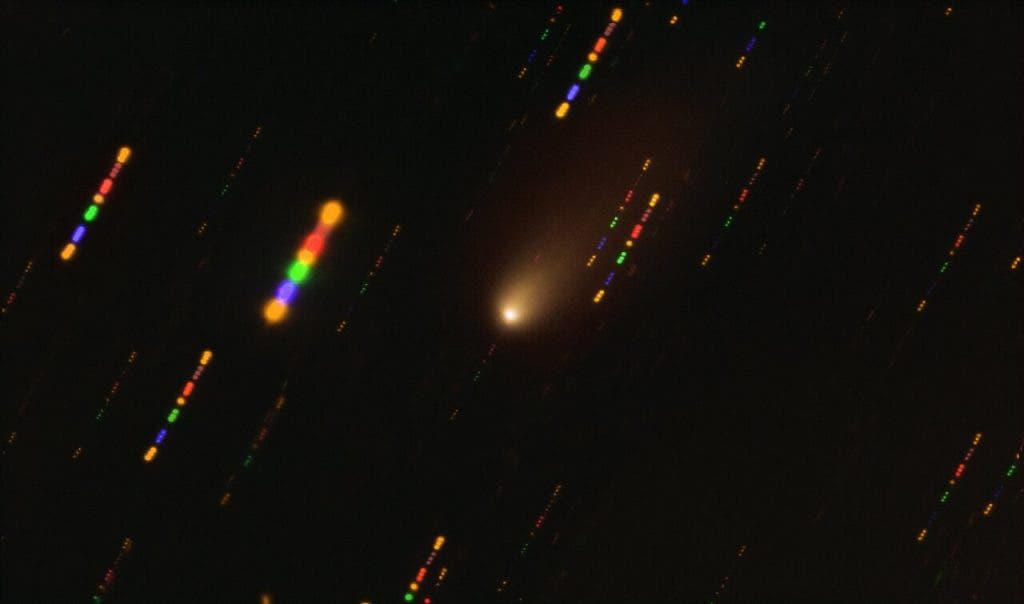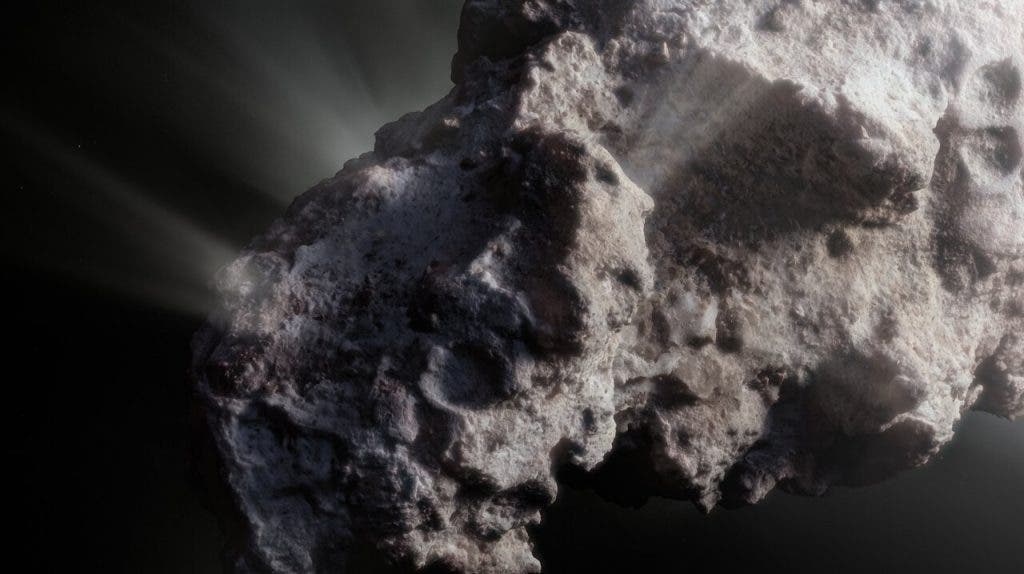As an interstellar visitor–an object from outside the solar system–the rogue comet 2I/Borisov is already a source of great interest for astronomers. But researchers have now also discovered that this interstellar comet is composed of pristine material similar to that which exists when star systems first form.
Not only does this make 2I/Borisov even more exciting than previously believed, it means that studying the material that composes it and its coma –an envelope of gas and dust that surround comets– could unlock secrets of planetary system formation.

“2I/Borisov could represent the first truly pristine comet ever observed,” says Stefano Bagnulo of the Armagh Observatory and Planetarium, Northern Ireland, UK. The astronomer tells ZME Science: “We presume this is because it has travelled in the interstellar medium without interacting with any other stars before reaching the Sun.”
Bagnulo is the lead author of one of two papers published in the Nature family of journals detailing new in-depth analysis of 2I/Borisov.
Reflecting on 2I/Borisov
The team was able to make its detailed study of 2I/Borisov–the second interstellar comet found trespassing in our solar system after the cigar-shaped Oumuamua–using the Very Large Telescope (VLT) located in the Acatma Desert, Northern Chile.
In particular, they employed the FOcal Reducer and low dispersion Spectrograph (FORS2) instrument–a device capable of taking mages of relatively large areas of the sky with very high sensitivity–and a technique called polarimetry to unlock the comet’s secrets.
“Sunlight scattered by material, for instance, reflected by a surface, is partially polarised,” explains Bagnulo comparing this to polaroid sunglasses which absorb the polarised component of the light and thus dampen reflected light suppressing glare. “In astronomy, we are interested in that polarised radiation because it carries information about the structure and composition of the reflecting surface or scattering material.”
Bagnulo continues by explaining that because light reflected by a darker object is polarised more than the light reflected by a brighter object, polarimetry may be used to estimate the albedo of an asteroid. This makes it a tool regularly used to study comets and allowed the team to compare 2I/Borisov to comets that begin life in our solar system.
“We found that the polarimetric behaviour of 2I/Borisov is different than that of all other comets of our solar system, except for one, Comet Hale-Bopp,” Bagnulo says. “We suggest that this is because Hale-Bopp is a pristine comet.”
It also implies that 2I/Borisov and Halle-Bopp formed in similar environments, thus giving us a good picture of conditions in other planetary systems.
Whilst, Bagnulo and his team were conducting this research with data collected by the VLT, another team was using a different method to examine the material that comprises this interstellar comet.
The Secrets in the Dust of 2I/Borisov
Bin Yang, is an astronomer at ESO in Chile, who also took advantage of 2I/Borisov’s intrusion into the solar system to study this mysterious comet, but using the Atacama Large Millimeter/submillimeter Array (ALMA).

“I had the idea of observing the thermal emission from the dust particles in the coma of 2I/Borisov using ALMA. My co-author Aigen Li constructed theoretical models to fit the ALMA observation and set constraints on the dust properties,” Yang, the lead author of the second paper detailing the 2I/Borisov investigation, tells ZME Science. “The composition of 2I/Borisov is similar to solar system comets, consists of dust and various ices. The major ices are water ice, carbon monoxide ice and the minor species include hydrogen cyanide and ammonia.”
Yang goes on to explain that the team was not able to precisely determine the composition of 2I/Borisov’s dust component. The astronomer adds that it could be composed of silicates or carbonaceous materials or a mixture of both.

The team also found that the comet’s coma contains compact pebbles and grains of around 1mm and above.
Additionally, as 2I/Borisov neared the Sun the relative amounts of water and carbon they detected from it changed quite drastically.
“We found that the dust coma of Borisov consists of compact, millimeter-sized and larger pebble-like grains, which formed in the inner region near the central star,” Yang says. “We also found the cometary nucleus consists of components formed at different locations in its home system.”
“Our observations suggest that Borisov’s system exchanged materials between the inner regions and the outer regions that are far from the central star, perhaps due to gravitational stirring by giant planets much like in our own solar system.”
Bin Yang, ESO.
These characteristics indicate that 2I/Borisov formed by collecting materials from different locations in its own planetary system. It also imnplies that the system from which it originated likelty featured the exchange of materials between its inner and outer regions. Something that Yang says is also common in our solar system.
“So, it is possible that chaotic material exchanging processes are common phenomena for young planetary systems,” says Yang. “We want to know if other planetary systems form like our own. But we cannot study these systems to the level of their individual comets.”
“Interstellar objects represent the building blocks of planets around other stars. Comet Borisov provides a rare and valuable link between our own solar system and other planetary systems.”
The Journey of 2I/Borisov
2I/Borisov was first discovered by Gennedy Borisov, an amateur astronomer and telescope maker, in August 2019. It was only the second visitor from outside the solar system to be found within our planetary system. That means that as it passed the Sun it presented a unique opportunity to compare conditions in our small corner of the galaxy to those found in other planetary systems.
“2I/Borisov is quite a small comet and it didn’t get very close to the Earth and the Sun, so the emission from this comet is quite weak. We were happily surprised that we actually detected the thermal emission from this alien comet. Because of this detection, we are able to set constraints on the dust properties of this comet,” says Yang. “Comets in other planetary systems are simply too far away and too small to be seen by our telescopes.
“We are extremely lucky to find a comet that is from a planetary system far far away from us. Even more luckily, we managed to take many pictures and spectra of this alien comet during its short visit.”
Bin Yang, ESO.
As Yang points out, 2I/Borisov is only in our solar system for a short time before it must continue its interstellar journey, so the time available to astronomers to study it is limited. But, with interstellar visitors to the solar system believed to be fairly common, but difficult to spot, improving telescope technology could offer future opportunities to study other objects with similar interstellar origins.
Bagnulo points to both the upcoming Vera C Rubin telescope and ESA’s comet interceptor, set to launch in 2029, as future technology that could help us spot and investigate interstellar comets.
“We expect to detect at least one interstellar object per year,” Yang concludes. “So, we will have more opportunities to study alien materials.”


